Abstract
A new system for the rapid identification of gram-negative bacilli on the Autobac system is described. This system utilizes growth inhibition profiles to a panel of differentially inhibitory chemical agents. These profiles are analyzed with a two-stage quadratic discriminant analysis to arrive at the organism identification. The system identifies 30 different groups of gram-negative bacilli, including the most clinically significant Enterobacteriaceae and glucose nonfermenters. A total of 3,726 strains, distributed among the 30 groups, was tested. The Autobac system agreed with the conventional biochemical identification 88.4% of the time. When the individual group results were weighted to reflect clinical frequency, the result was a 93.1% agreement.
Full text
PDF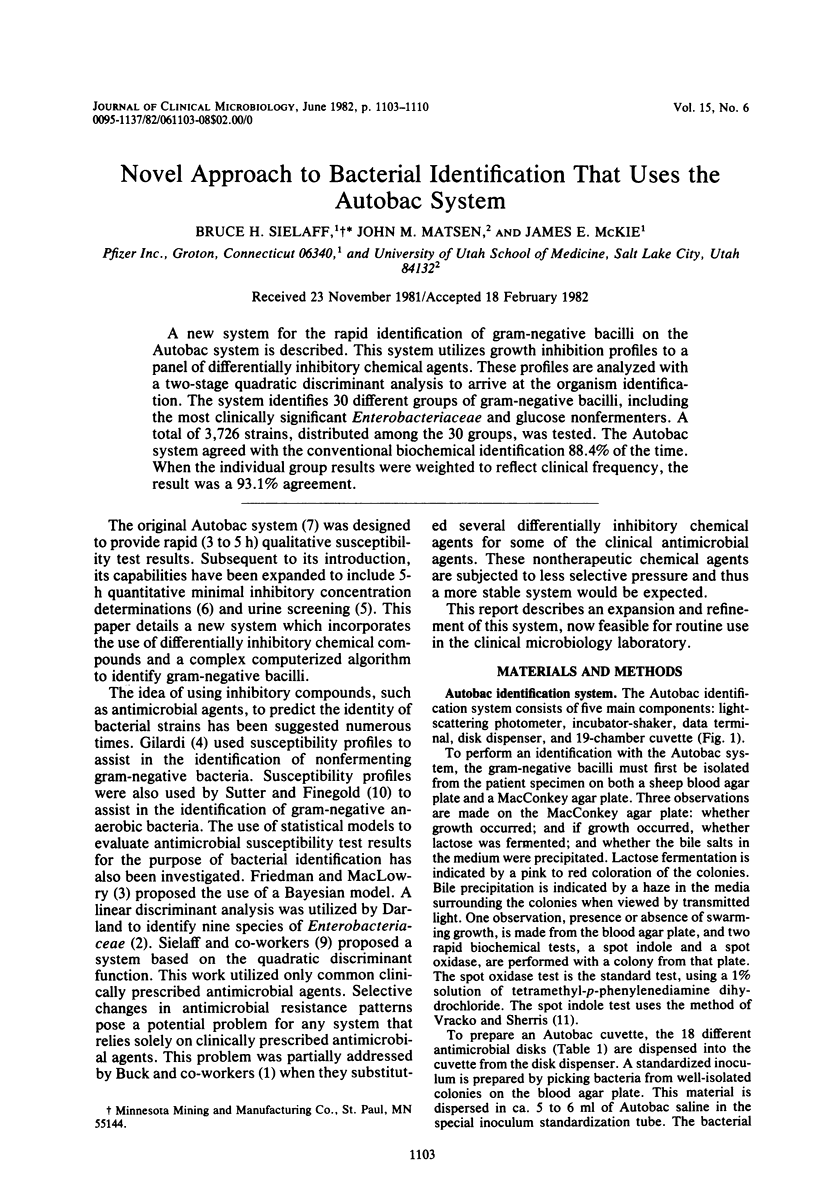
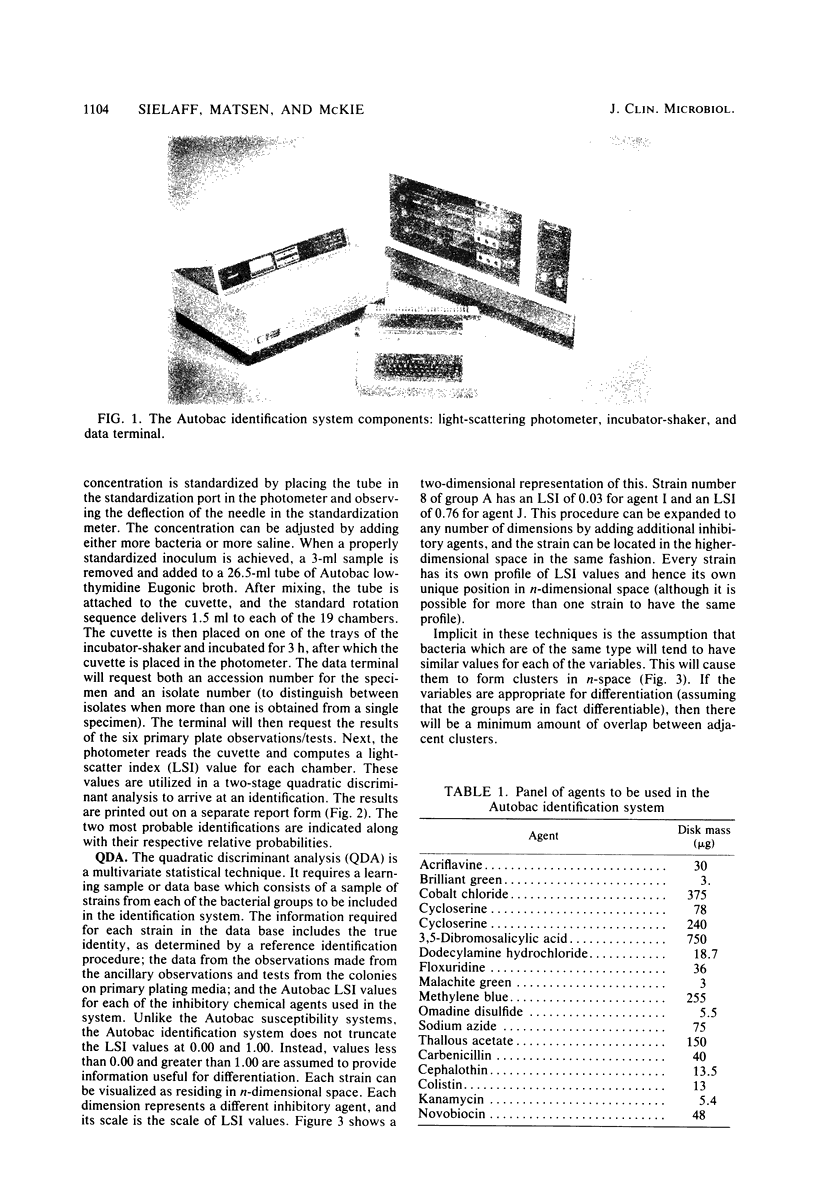
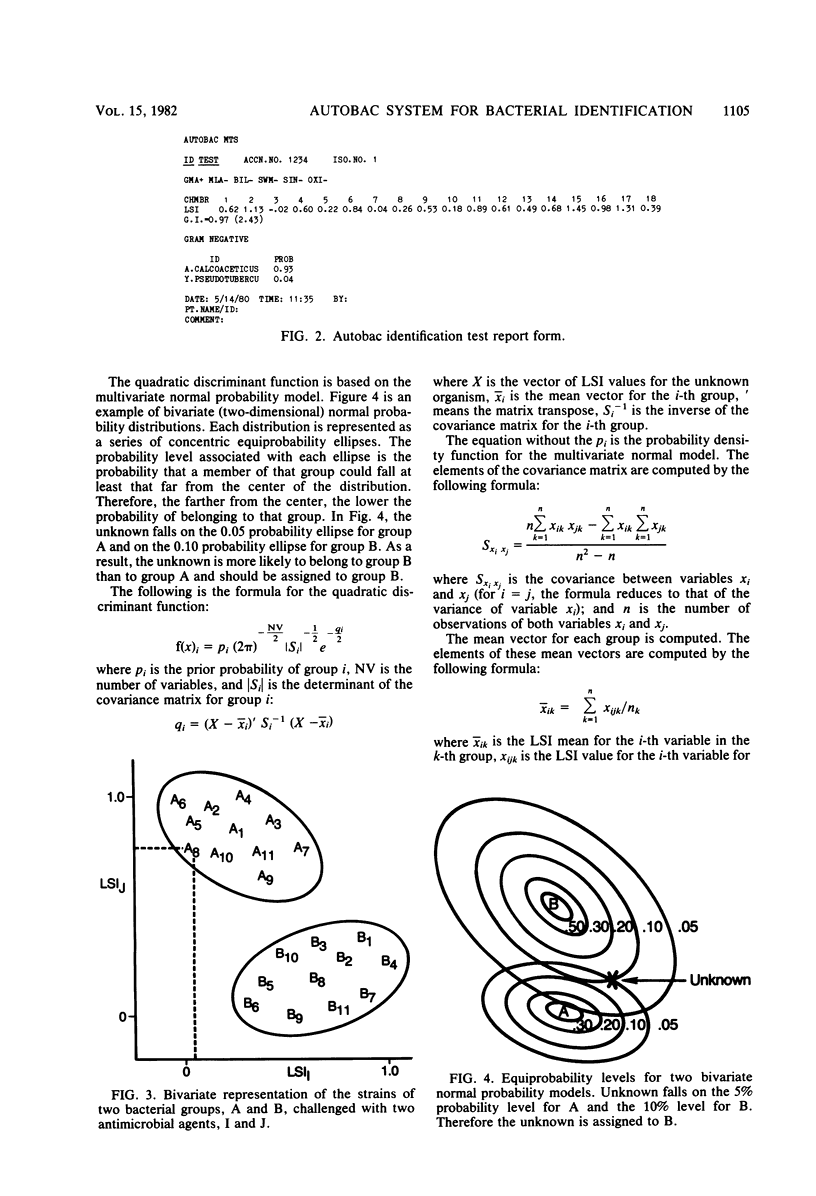

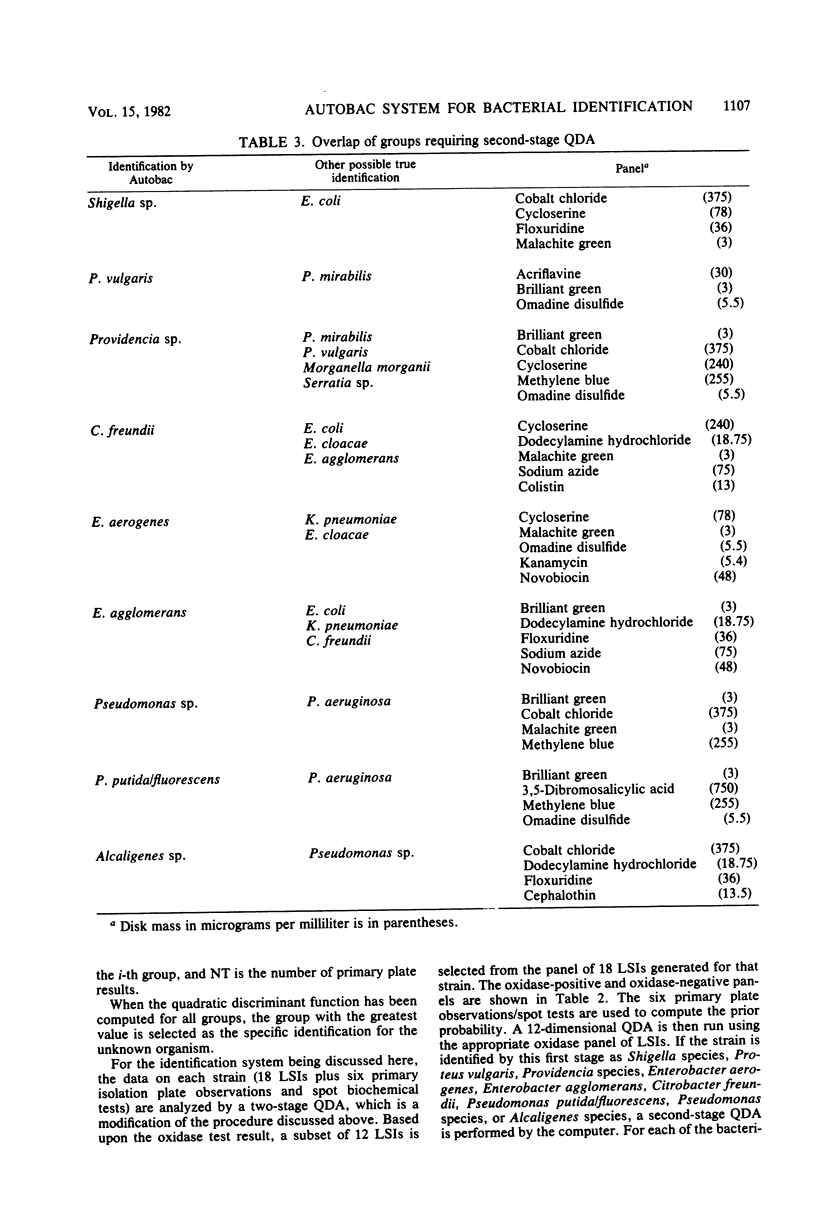
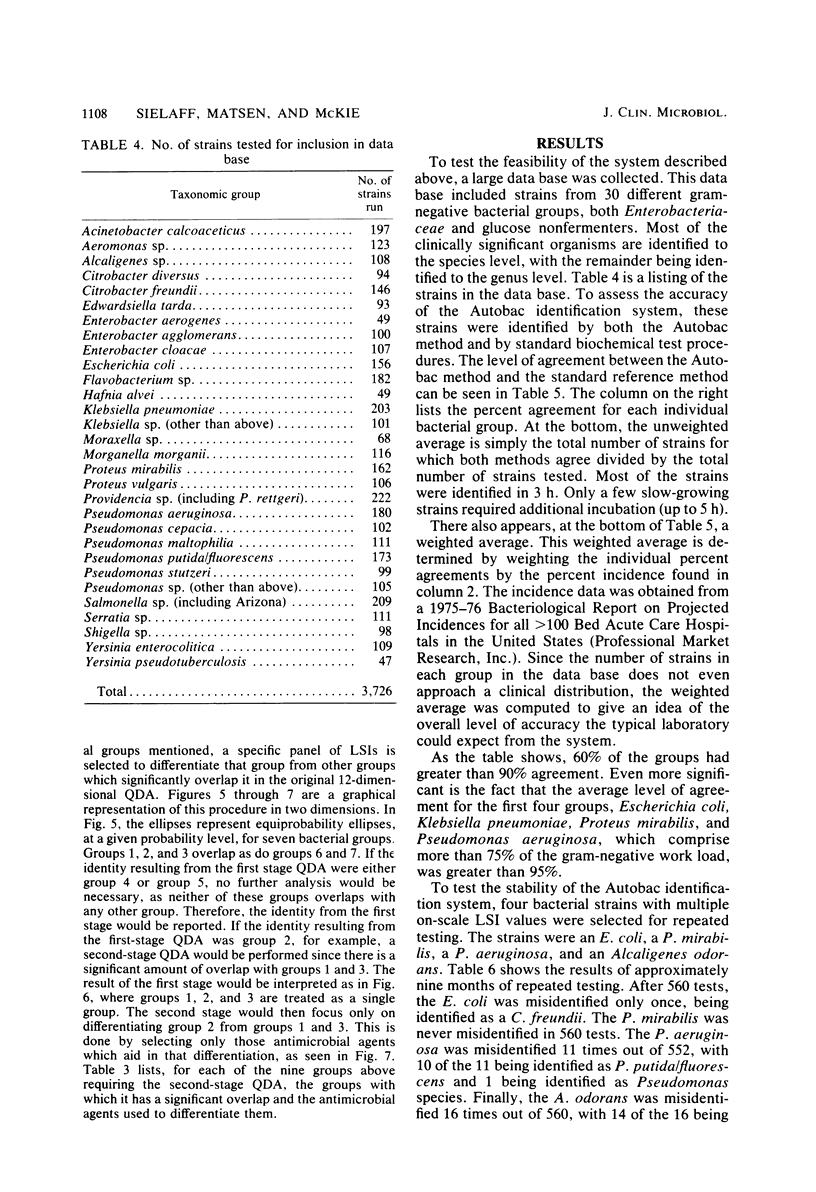
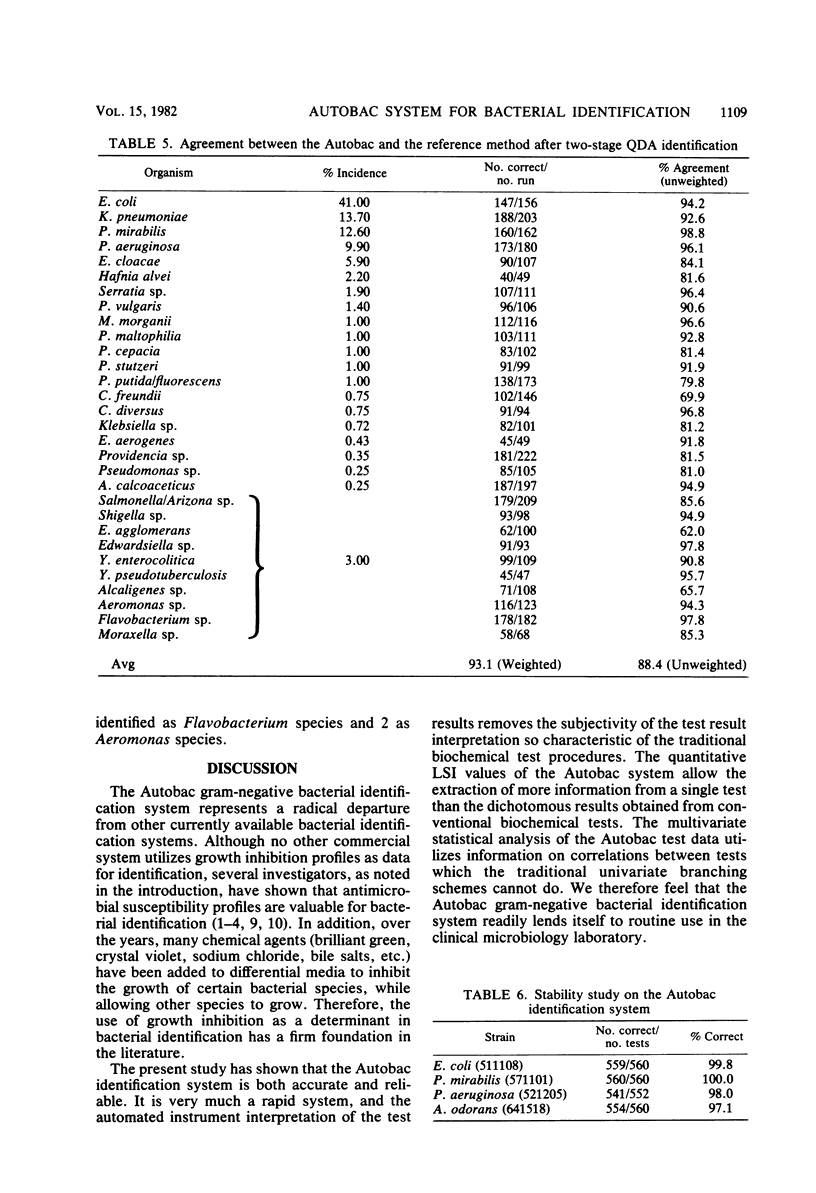
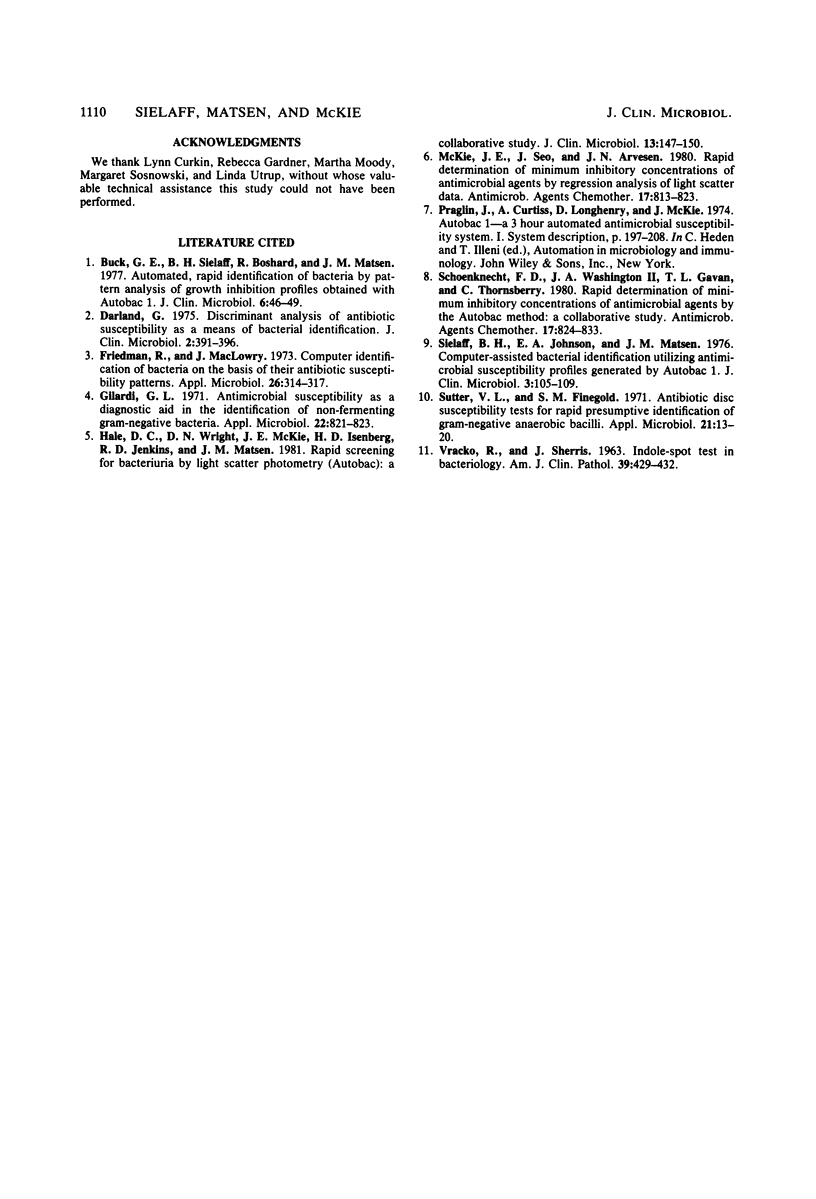
Images in this article
Selected References
These references are in PubMed. This may not be the complete list of references from this article.
- Buck G. E., Sielaff B. H., Boshard R., Matsen J. M. Automated, rapid identification of bacteria by pattern analysis of growth inhibition profiles obtained with Autobac 1. J Clin Microbiol. 1977 Jul;6(1):46–49. doi: 10.1128/jcm.6.1.46-49.1977. [DOI] [PMC free article] [PubMed] [Google Scholar]
- Darland G. Discriminant analysis of antibiotic susceptibility as a means of bacterial identification. J Clin Microbiol. 1975 Nov;2(5):391–396. doi: 10.1128/jcm.2.5.391-396.1975. [DOI] [PMC free article] [PubMed] [Google Scholar]
- Friedman R., MacLowry J. Computer identification of bacteria on the basis of their antibiotic susceptibility patterns. Appl Microbiol. 1973 Sep;26(3):314–317. doi: 10.1128/am.26.3.314-317.1973. [DOI] [PMC free article] [PubMed] [Google Scholar]
- Gilardi G. L. Antimicrobial susceptibility as a diagnostic aid in the identification of nonfermenting gram-negative bacteria. Appl Microbiol. 1971 Nov;22(5):821–823. doi: 10.1128/am.22.5.821-823.1971. [DOI] [PMC free article] [PubMed] [Google Scholar]
- Hale D. C., Wright D. N., McKie J. E., Isenberg H. D., Jenkins R. D., Matsen J. M. Rapid screening for bacteriuria by light scatter photometry (Autobac): a collaborative study. J Clin Microbiol. 1981 Jan;13(1):147–150. doi: 10.1128/jcm.13.1.147-150.1981. [DOI] [PMC free article] [PubMed] [Google Scholar]
- McKie J. E., Seo J., Arvesen J. N. Rapid determination of minimum inhibitory concentrations of antimicrobial agents by regression analysis of light scattering data. Antimicrob Agents Chemother. 1980 May;17(5):813–823. doi: 10.1128/aac.17.5.813. [DOI] [PMC free article] [PubMed] [Google Scholar]
- Schoenknecht F. D., Washington J. A., 2nd, Gavan T. L., Thornsberry C. Rapid determination of minimum inhibitory concentrations of antimicrobial agents by the Autobac method: a collaborative study. Antimicrob Agents Chemother. 1980 May;17(5):824–833. doi: 10.1128/aac.17.5.824. [DOI] [PMC free article] [PubMed] [Google Scholar]
- Sielaff B. H., Johnson E. A., Matsen J. M. Computer-assisted bacterial identification utilizing antimicrobial susceptibility profiles generated by autobac 1. J Clin Microbiol. 1976 Feb;3(2):105–109. doi: 10.1128/jcm.3.2.105-109.1976. [DOI] [PMC free article] [PubMed] [Google Scholar]
- Sutter V. L., Finegold S. M. Antibiotic disc susceptibility tests for rapid presumptive identification of Gram-negative anaerobic bacilli. Appl Microbiol. 1971 Jan;21(1):13–20. doi: 10.1128/am.21.1.13-20.1971. [DOI] [PMC free article] [PubMed] [Google Scholar]



